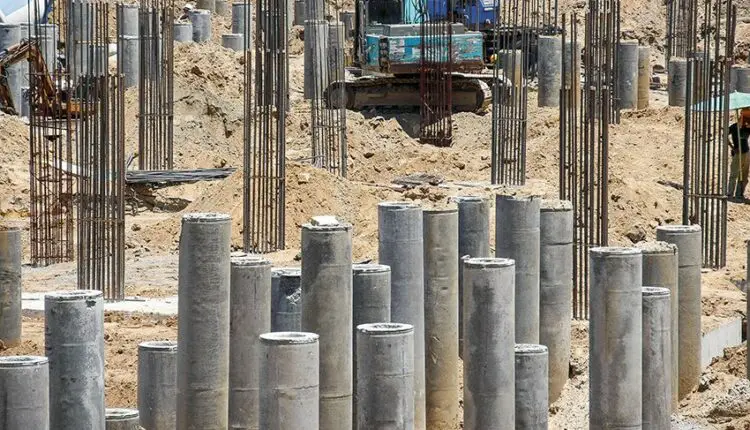Pile Volume Calculator | Calculate the Volume of a Pile
Articles, products, and services offered on this site are for informational purposes only. We are part of the Amazon Services LLC Associates Program, an affiliate advertising program. Amazon.com is compensated for sales resulting from links on our website.
Please review our disclaimer before acting based on anything you read or see.
The proportions and form of a mound of sand or gravel determine its volume. You may obtain an approximate estimate using the Pile volume calculator for gravel piles that are conical and pyramidal. Then, depending on how rounded the top of the cone or pyramid is, you may modify this estimation.
Additionally, many facilities, particularly those in the industrial sector, must be constructed in areas that are only sometimes suitable for freestanding structures. For instance, refineries and terminals are often situated close to gulfs, rivers, and other bodies of water. The industrial product may be transported easily because of its closeness to waterways.
However, the soil in these areas is often exceedingly brittle and unstable, making it impossible for the facilities’ heavyweight to be supported without a solid piling foundation. In addition, many of these places are vulnerable to environmental hazards like strong winds and large storms, which might endanger the security and structural integrity of structures unsupported by high-quality pilings.
In all, pile volume calculation is essential to avoid hassles. Come along as we highlight the significance of the Pile volume calculator below.
Pile Volume Calculator
How to Calculate Pile Volume
Following these procedures will allow you to calculate the pile volume:
Calibrate your level
Verify the calibration of the level app on your mobile device against a genuine spirit level if you’re using one. Your smartphone should be placed on its side on a shelf that has been verified to be absolutely level using a true spirit level. Zero it after that. Depending on the app, calibrating is often a menu option.
Measure the Pile
You can do this by standing at the same spot for all three measures and making sure you recognize the pile’s top. Make sure you can see the pile’s bottom if there is a difference in elevation between you and it.
Next, estimate your slope angle or the distance from your current location to the pile’s highest point. Make sure you can see the top of the pile from where you are standing again. You won’t be able to calculate your elevation above the pile immediately. But don’t worry. After you have made a balloon map of the region, you can accomplish this using Google Maps.
It’s crucial to take all your readings from an item that can be seen clearly if you need help gauging the distance to the pile. This might be a tree, fence, home, etc. So, when you subsequently use the map to calculate distances, you can remember exactly where you were.
Take images of the pile’s form.
You may use them later to estimate the form.
Determine the pile’s volume.
To get the volume of the pile, you’ll apply some basic trigonometry. All you need is a calculator and the dimensions from above. A calculator should be set to degrees, not radians.
Use a tool like Google’s online calculator if your calculator lacks a Tangent (or Tan) option. Use the following equation when dealing with an elevation change:
Pile volume = [Tangent (angle of elevation times pile distance)] + [Tan (angle to pile base x pile distance)]
Why You Need to Know the Pile Volume
You may determine the volume of substance between two landscapes or levels by using the instructions to measure or compute the volume across areas. Calculations of pile volume, cutting, and load are routinely used to estimate the expense of transporting material to or from a particular location.
However, this may also be used to determine the effect of a landslide occurrence by analyzing with and without volumetric estimates and predicting the agricultural output.
After you know the pile volume, you may manually adjust the base height for volume calculations. As a result, the cut volume will be the region above the base height, and the fill volume will be the area below the basis height.
You may also choose to Conduct Multiple Calculations Over a Range of Base Heights when the Above Ground option is used. The user-defined height above ground about each vertex in the chosen feature will be used to calculate the base height.
Things to Consider Before Calculating Pile Volume
Some Things to Consider Before Calculating Pile Volume include the following:

Volume Computation Type – This enables you to specify the area for a cut-and-fill computation by establishing a tract using a line feature or selling up a calculation using an area feature.
Sample Spacing – You may manually enter the sample spacing used to calculate volumes in this section. This often includes a sizable region that has an elevated terrain model specified over it. Small values might lengthen the processing time in this case. The Transfer dialog may also be used to adjust the horizontal ground targets.
The base elevation for measurements – This feature enables you to do so. In this case, the cut volume will be the region above the basic height, and the fill volume will be the area below the basic height. You may do many calculations across various base heights when the Above Ground option is chosen for usage. Additionally, the viewer height above the base, to each edge in the chosen characteristic, will determine the base height.
Pile Volume basics & applications
Before installing infrastructure on top, building engineers employ pile volume to solidify the foundations of a construction site. Contractors employ it as a crucial element in the building process to increase a project’s safety and dependability.
Piling is a crucial technical skill that requires self-assurance and a supportive team environment. Understanding the various Pile Volume fundamentals and applications is crucial if you want to work in the construction sector. Using the pile volume method might be crucial in the following circumstances as well:
- When a superstructure’s high loads need extra support
- When alternative forms of bases are too costly or impractical
- When a canal or substantial drainage system is close to the building
- When inadequate soil conditions prevent soil excavation to the appropriate depth
- When pumping or other methods of keeping the foundation trenches dry are no longer effective
Frequently Asked Questions
How do you find the volume of a sand pile?
Specify the depth of the excavation to determine the sand pile’s volume. Say d is equal to 0.5 yds. To calculate the volume of the excavation, multiply the area by the depth: 36 * 0.5 = 18 CU yd. The needed amount of sand is the same as the volume of excavation.
How much is a pile of gravel?
A 2-inch-deep pile will cover 100 square feet of gravel.
How do you measure a pile of gravel in tons?
Add up the length, breadth, and depth to calculate the tonnage of a pile of gravel. Divide the total number of cubic feet by 27 to get cubic yards. You may convert your total cubic yards to tons by multiplying it by 1.13 since one cubic yard of gravel weighs 1.13 tons.
How big is a 4-yard pile of dirt?
The dimensions of a cubic yard are 3 feet by 3 feet by 3 feet. Whereas a ton measures weight, a cubic yard measures volume. A yard of earth typically weighs 2,200 pounds, whereas a yard of topsoil typically weighs 1,800 pounds. A 4-yard mound of soil will weigh 8,800 pounds as a result.
How do you convert cubic yards to tons?
Cubic Yards to Tons Conversion: Tons = Cubic Yards x 1.4.
How do you calculate the volume of dirt?
Using a measuring tape, find the length of the area where the soil will be placed to calculate its volume. Next, calculate the width and required soil depth in feet.
To calculate the cubic feet of soil, multiply the breadth by the length by the depth.
How many tons are in a yard?
A cubic yard has 1.5 tons in it.
How much will 6 yards of dirt cover?
54 sq feet may be covered with 6 yards of dirt.
Expert Opinion
More building projects are being started every single day. In rare cases, a site investigation report will show that the ground cannot hold the weight of the building being built. In these situations, pilings are strongly advised to boost building safety, especially if the structure is exceptionally heavy. Pilings are also employed to manage settlements and transfer building loads, inclined or vertical, to the foundation. At this point, the Pile volume calculator will aid you immensely.



Comments are closed.